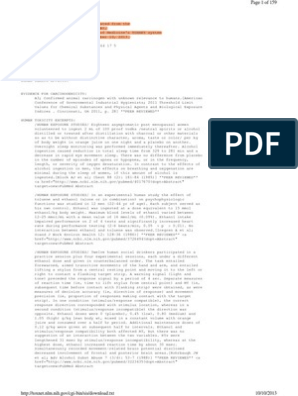Holly 1
Holly Olsen
Michelle Shimmin
English 12
17 May 2016
Is Animal Testing Really Beneficial?
Researchers are so ingrained in trying to cure mice that they forget that
were trying to cure humans. This quote was stated by Ronald W. Davis, a
professor for Biochemistry and Genetics at Stanford University. We often feel
that testing animals is necessary in discovering new cures and testing
products. Some facts may lead you to think differently. In fact, it turns out
testing animals is very expensive and very pricey. For how pricey it is, it is
also very ineffective. Although drugs may have passed the Rat test, they
certainly have shown to differ for humans.
When discussing this major argument, a big factor is whether animals even
make good testing subjects. According to Paul Furlong, Professor of Clinical
Neuroimaging at Aston University, states that its very hard to create an
animal model that even equates closely to what were trying to achieve in
the human. Peta Organization shares some facts that may lead us to agree.
75% of side effects identified in animals never occur in humans. Also,
according to a thorough study, 88% of stillbirths are caused by drugs which
passed animal testing. Not only is it ineffective, but is said to be very
expensive. Animal testing can take up to five or more years at a cost of
�Holly 1
millions of dollars per substance examined. Testing two-species for lifetime
cancer can cost around 2 to 4 million dollars. Animal tests result in wasting
money and lives when alternative methods are cheaper and successful.
When animals are tested, they are forced to eat or inhale substances, have
them rubbed in their skin, or injected in their bodies. Animals are then
monitored before they are killed. An example of animal testing is the Draize
eye test. The Draize eye test is used by cosmetic companies to evaluate
irritation caused by shampoo and other products. The process for this
includes rabbits being incapacitated in stocks with their eyelids forced open
with clips, sometimes for days. LD50 is used to find out which dose of
chemical will kill half of the animals being used in the experiment. According
to The US Department of Agriculture, in 2010, 97,123 animals suffered pain
during experiments while being given no relief medication.
Scientists may say that we have developed rights for animals already. Have
we progressed and thought about our little furry friends? In 1966, the
Animal Welfare Act was passed to regulate the treatment of animals in
research, exhibition, transport, and by dealers, states the United States
Department of Agriculture. What we didnt know is that the Animal Welfare
Act only provided minimal protection for certain species while excluding
others. Although researchers may think that the US Department of
Agriculture will make sure scientists follow the regulations, it is impossible
considering there are 115 USDA inspectors and 7,750 licensed facilities. If
�Holly 1
these facilities were caught, the only consequence they would receive is a
penalty so small it is inconsequential.
There are many ways to research and test products without testing animals.
Results are inaccurate when tested on animals. If we used safe ingredients
in our cosmetics, we wouldnt have to test at all. It is important that we
realize testing animals is more of a harm than a benefit. We could save lives
and money by using alternative methods. According to Dr. Clif Barry, Mice
are Mice, and People are People.
Works Cited
"Animal Testing - ProCon.org." ProConorg Headlines. 10 Dec. 2015. Web. 16 May
2016. <http://animal-testing.procon.org/>.
Matthies, Chrissy. "Product Testing: Toxic and Tragic." PETA. N.p., n.d. Web. 16 May
2016. <http://www.peta.org/issues/animals-used-for-experimentation/animals-usedexperimentation-factsheets/product-testing-toxic-tragic/>.
McKie, Robin. "Scientists Told to Stop Wasting Animal Lives." The Guardian.
Guardian News and Media, 2015. Web. 16 May 2016.
<https://www.theguardian.com/science/2015/apr/18/animal-lives-wasted-in-drugssafety-tests>.
Pacelle, Wayne. "Fact Sheet: Cosmetic Testing." RSS. 2016. Web. 16 May 2016.
<http://www.humanesociety.org/issues/cosmetic_testing/qa/questions_answers.html
>.
"U.S. Food and Drug Administration." Animal Testing & Cosmetics. 31 May
1999. Web. 16 May 2016.
<http://www.fda.gov/Cosmetics/ScienceResearch/ProductTesting/ucm072268.
htm>.























































































